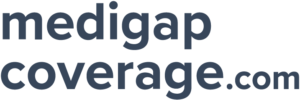Prescription Drug Coverage

How Do I Enroll?
To get the PDP you want, either:
- Call 1-800-MEDICARE to locate PDPs in your area
- Enroll on the Medicare Plan Finder or on the plan's website
- Call the private insurer with the specific PDP you want to join
- Fill out the paperwork sent by mail from Medicare
Costs
Good-bye Donut Hole

Is This the Right Plan for Me?
The Plan’s Formulary
A formulary is simply the list of prescription drugs covered under the plan, and each Medicare Prescription Drug Plan has its own one. If you can’t find the medication or medications you need on a plan’s formulary, we suggest you talk with your physician about alternative medications.
The Plan’s Network
It’s fairly standard for a plan to come with an “in-network” list of approved pharmacies. These are selected on the basis of lowest prescription drug prices. The risk you take going out of network is that you may end up paying more for your medications.
The Mail Order Option
There are plans which offer you better prices for drugs you get via mail order pharmacies. Since your plan may require a three-month minimum per order, it may be smart to ask your doctor if the mail order option makes sense given the medications you need.
The Detail on Covered Drugs
Part D plans generally sort prescription drugs by tier, and each tier has a different cost. The rule of thumb is, the lower the tier, the lower the drug cost; and the higher the tier, the higher the drug cost.
It’s possible for your plan’s formulary to change during the year. Your plan is required to give you two options should your list of medications be affected by this change:
- You must receive written notice at least 60 days before the change occurs
- You get a 60-day supply when you request a refill and you receive written notice of the change
Here’s a breakdown of the different tiers and associated costs. Remember that you should inquire about how your plan structures its tiers since each plan has its own tier system.
Tier 1
Lower co-payment, offering most generic prescription drugs.
Tier 2
Medium co-payment, offering preferred brand-name prescription drugs.
Tier 3
Higher co-payment, offering non-preferred brand name prescription drugs.
Specialty Tier
Highest co-payment or co-insurance, offering specialized, high-cost prescription drugs.
Although Part D drug plans are entitled to provide their own formularies from the comprehensive list of covered prescription medications, they are barred from creating formularies which exclude specific drugs in order to discriminate against certain enrollees.
Should your plan not have a drug that you require, it’s in your rights to ask for a written explanation, and request an exception.
Formularies have to include at least two prescription drugs in each category, covering the bulk of medications in the six protected classes of prescription drugs:
- HIV/AIDS
- Antidepressant
- Antipsychotic
- Anticancer
- Immunosuppressant
- Anticonvulsant
Additionally, all available vaccines have to be covered by Part D when they are needed to prevent illness, except for vaccines covered under Medicare Part B.
For more detailed information regarding Medicare Part D visit medicare.gov.
Still confused? Call us!
We’re here at 833-245-0614 to answer any questions, and ready to help with any issues you might have with an insurer through the enrollment process.
Table of Contents
FAQs
If I get a Medicare Advantage plan, does a prescription drug plan automatically come with it?
No, some MA plans do not include drug coverage although most do.
I have Original Medicare, but didn’t sign up for Part D yet. Could I get a late-enrollment penalty?
Yes. You need to enroll in Part D during your Initial Enrollment Period.
Is the deductible for a Part D plan expensive?
They vary from plan to plan, but the most you’ll pay in 2023 is $505.
How concerned do I need to be about the donut hole in my prescription drug coverage?
The coverage gap will be closed by law by the end of 2019, but you should learn about how it works now.
What are the best Medicare supplement plans?
- Best overall Medicare supplement for new enrollees: Plan G
- Best overall Medicare supplement before 2020: Plan F
- Best low cost Medicare supplement: Plan K
- Best alternative to Plan G Medicare supplement: Plan N
What is a Medicare supplement plan?
Medicare Supplement policies are private health insurance designed to cover gaps in Original Medicare. They are also known as Medigap plans. These take care of costs such as copays, coinsurance, and deductibles which can become expensive if you need regular care from a doctor or hospital. If you need medical care while traveling outside the U.S., you can buy Medigap policies to help cover those costs. As a supplement to Original Medicare, you’re required to have Part A and Part B before you canget a Medigap policy. This way, Medicare is responsible for the Medicare-approved costs of the covered care, and the remainder is covered by your Medigap plan.
What is the most expensive Medicare supplement plan?
Optimal coverage comes with higher costs, making Plan F the most expensive Medigap plan. Plan F is known as “first-dollar coverage” and it takes care of everything provided during a doctor or hospital visit. Your only responsibility is for dental, vision, medications, and equipment, such as hearing aids.
Why is Plan F being discontinued?
The Federal government ended the Plan F option for new enrollees last year to keep the healthcare system from being overused by patients who had their deductibles covered. The next best coverage after Plan F is Plan G.
Is Plan G better than Plan F?
Medigap Plan G offers every advantage of Plan F except for the deductible, which you have to cover. Because it isn’t as comprehensive as Plan F, Plan G is more affordable.
What is the best and cheapest Medicare supplement insurance?
For people who don’t go to the doctor often, Plan K is worth considering. It is the most affordable because it provides just 50% of Medicare Part B coinsurance, the Part A deductible, blood, skilled nursing, and Part A hospice costs. For comparison, Plan G and others offer full coverage of these expenses, and more.
Is Medicare supplemental insurance worth it?
It’s hard to argue against plans which cut your traditional Medicare costs. For most people, having the extra coverage these supplemental plans provide is common sense, unless they want the specific features of a Medicare Advantage plan.
Do I really need supplemental insurance with Medicare?
Most people would benefit from not having to pay out-of-pocket to stay healthy. Medicare supplement insurance or a Medicare Advantage plan offer vital savings now, but are indispensable should a catastrophic health issue occur.
What is the most popular UnitedHealthcare Medicare Supplement plan?
Of the 10 Medicare-approved Medigap plans, Plan G and Plan N are the most popular. Plan F is no longer available to new Medicare enrollees as of 2020, but it is still popular among people who bought this plan prior to 2020.
How much does Medigap insurance cost?
- Plan F$128–$342
- Plan F (high deductible)$22–$88
- Plan G$106–$325
- Plan G (high deductible)$29–$58
Who qualifies for Medigap?
Before getting a Medicare supplement plan, you need to be enrolled in Medicare Part A (hospital insurance) and Part B (medical insurance). People with Medicare Advantage Plans who want to go back to Original Medicare can buy a Medigap policy prior to switching.
Is Medigap insurance worth the cost?
The security of having lower or no out-of-pocket healthcare costs can offset the premiums you’ll have to pay for whichever Medigap plan you choose, which vary depending on the benefits offered.
How Much Is Medigap per month?
The national average cost for Medicare Supplement Plan F is $1,824 annually, which is $152/month; Medigap Plan G will cost you around $143 per month.
Is Plan G the best Medigap plan?
Since Plan F was discontinued for new enrollees as of 2020, Plan G offers the most coverage for people 65 and older. It has a lower premium than Plan F and duplicates its benefits, except for the Part B deductible.
Is it better to have Medicare Advantage or Medigap?
It depends on your specific needs, but for most people a Medigap plan is very useful in supplementing the coverage of Medicare Part A and Part B. A Medicare Advantage plan is an affordable way to get healthcare coverage not offered by Original Medicare.
What is the most popular Medicare supplement plan?
Historically, Plan F has been the most popular because it covers all the out-of-pocket costs Medicare does’t pay for. This includes the 15% extra charge billed by providers who do not take Medicare as full payment.
Does Medigap cover prescription drugs?
Since January 1, 2006, no Medigap policy came with prescription drug coverage. You have two options to get covered, enrolling in either a Medicare Prescription Drug Plan (Part D) or a Medicare Advantage plan.

